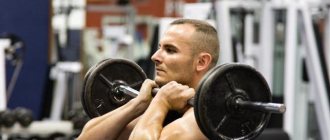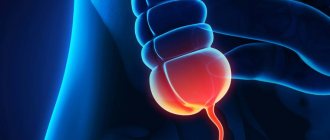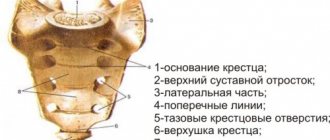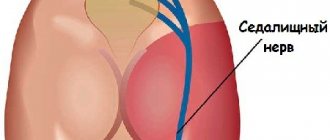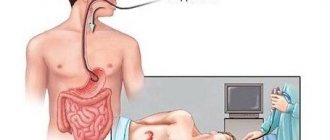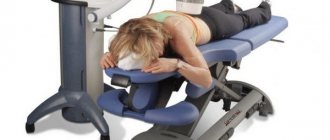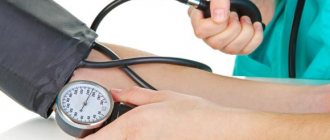The structure of the elbow joint
The elbow is a movable connection of the shoulder and forearm, which has a complex anatomical structure. The elbow of the right, as well as the left hand, includes three joints:
- humeroulnar;
- brachioradial;
- proximal radioulnar.
United in a single capsule, these joints form a complex mechanism. When the elbow flexes and extends, the load is taken on by the muscles that are attached to the joint by tendons. The joint capsule is fixed by means of four ligaments. The inflow and outflow of blood in the elbow joint is provided by blood vessels, and lymphatic drainage is provided by lymph nodes. The innervation of the joint occurs due to the network of nerves located in it.
Causes of pain in the elbow joint
The causes of pain in the right or left elbow can be different, and before starting treatment, you should definitely find out what exactly could have caused the condition to worsen:
- Microtrauma, bruise, blow due to improper flexion/extension of the arm when lifting weights can give rise to the development of pain.
- Poor circulation due to compression of large or small blood vessels is often the cause of throbbing pain.
- Degenerative changes in cartilage in older people or premature wear of tissue in the presence of inflammatory processes in the synovial bursa.
- External or internal epicondylitis (inflammation of the ligaments) is a common cause of pain in the elbow after carrying heavy objects, performing physical exercises, or prolonged monotonous rotation of the arm to the right or left. Such loads lead to microtrauma of the ligaments. At rest there is no pain.
- Cervical osteochondrosis can cause pain in the right and left elbow joints of the arm, while discomfort is noted throughout the entire limb. It is characteristic that the appearance of the elbow remains virtually unchanged. Hypothermia provokes increased pain and, in some cases, even numbness of the hand.
- Arthrosis is a disease when the elbow not only hurts, but also crunches when flexed or extended. In the absence of appropriate treatment, deformation of the joint occurs, leading to noticeable external changes.
- Arthritis is a pathological condition of a systemic nature. In addition to the pain felt by the patient, swelling and redness appear on the inside or outside of the joint.
- Bursitis , or disease of the synovial bursa.
- Inflammatory tendon damage – tendinitis .
- Inflammation of muscle tissue - diffuse fasciitis .
- Synovial chondromatosis.
- Protrusion or herniation of an intervertebral disc.
The cause of elbow pain can be some neurogenic or cardiovascular pathologies:
- pathology of the nerve roots of inflammatory origin, resulting from an injury to the elbow;
- cubital tunnel syndrome, caused by a genetic predisposition or congenital features of the anatomical structure of the elbow joint;
- myocardial infarction - this pathological condition causes pain and numbness in the elbow area;
- systemic and oncological pathologies.
Elbow pain can occur as a result of injury: fracture, bruise, dislocation . In some cases, pain is a consequence of damage to internal organs.
General factors
Elbow pain appears due to various problems, and the nature of the discomfort may vary . It is possible to distinguish a conditional classification according to the local location of pain.
Ask your question to a neurologist for free Irina Martynova. Graduated from Voronezh State Medical University named after. N.N. Burdenko. Clinical resident and neurologist BUZ VO \"Moscow Polyclinic\".Ask a question>>
The cause of all disorders is diseases with chronic manifestations, as well as fresh or old injuries.
Disturbances in cartilage, which lead to deformation of bones and joints
- arthritis - infectious inflammation;
- arthrosis - joint deformation;
- chondrocalciosis - a large accumulation of calcium, forming deposits in the joint capsule;
- osteophyte - bone growth;
- synovial chondromatosis - the formation of loose cartilage tissue;
- gout is a metabolic disorder;
- tumor - benign or malignant formation;
- fracture - violation of the integrity of the bone;
- bruise - closed injury to soft tissue;
- dislocation - displacement of the articular bone;
- subluxation - partial displacement of the bone tissue of the joints.
Damage to muscle and connective tissue
- tendonitis - inflammation that causes tissue degeneration;
- epicondylitis - acute, subacute, medial;
- bursitis;
- synovitis;
- diffuse fasciitis;
- cubital tunnel syndrome;
- stretching;
- ruptures.
Diseases affecting nerve endings and the cardiovascular system
- neuritis;
- diseases of the spinal ridge: osteochondrosis, intervertebral hernia, Schmorl's hernia;
- blood diseases: anemia, hemophilia;
- neutrophic Charcot arthropathy;
- myocardial infarction.
Classification and characteristics of elbow pain
Pain in the elbow joint can be classified depending on its location and time of occurrence:
- The appearance of discomfort when bending the arm indicates the presence of deforming arthrosis, arthritis, bursitis, pathological neoplasm or injury. It could also be a tendon rupture or medial epicondylitis.
- Pain when extending the arm can be a consequence of all of the above pathologies, lateral epicondylitis or osteoarthritis. In this case, it is painful for a person to hold heavy objects on an outstretched arm or clench the hand into a fist.
- Pain on the inside of the elbow indicates medial epicondylitis, bruise or other traumatic injuries.
- Painful sensations after exercise can be a consequence of injury or muscle strain. Discomfort may occur due to improper exercise. It is athletes who are most susceptible to injury, as well as people who periodically face the need for increased physical activity. Elbow injuries are not uncommon for tennis players.
- Pain when shaking hands may indicate serious damage to the elbow joint.
- If the elbow begins to hurt during exercise (after lifting weights), this indicates the possible development of subacute epicondylitis.
- Pain at rest can develop in the presence of degenerative or inflammatory diseases of the joint.
- If a child complains of pain in his elbow, he most likely suffered an injury. This symptom also accompanies the development of reactive arthritis caused by a bacterial or viral infection. If such a pathology occurs, it is important not to waste time, since this disease can significantly affect your health in the future.
Why do elbow joints hurt and what to do about it?
The elbow joint is a complex anatomical structure. It is formed by 3 bones. More precisely, the elbow joint consists of 3 small joints, each of which is subject to pathological changes. The elbow is enclosed in a synovial membrane, and important nerves, blood vessels, and muscles and tendons are attached near it. Therefore, pain in the elbow joint is not always associated only with damage to the joint, but also with diseases of the surrounding structures.
Contrary to popular and erroneous belief, elbow joints hurt not only in athletes, but also in ordinary people, especially those who overload this area of the arm due to their duties. The causes of pain in the elbow joints can be very diverse, but most of them can be attributed to inflammatory, degenerative-dystrophic or traumatic. Let's consider the main diseases that occur with pain in the elbow joint.
Inflammatory causes of pain in the elbow joint
Perhaps this is the most common group of causes of pain in the elbow area. Several factors can cause inflammation of the joint structures: infections, allergic or autoimmune damage. Depending on which part of the elbow joint is inflamed, several nosological forms are distinguished.
Arthritis
Arthritis is an inflammation of the entire elbow joint, and there can be several causes. Most often these are pathogenic microorganisms (bacteria, viruses, fungi) or autoimmune systemic diseases (rheumatoid arthritis). Inflammation can also be caused by other factors, for example, allergic reactions of the body, uric acid deposition due to gout (microcrystalline arthritis). As a rule, the disease is acute, but chronic forms also occur.
Regardless of the cause of arthritis, the symptoms of the pathology are very similar. Patients are concerned about:
OUR READERS RECOMMEND!
Our readers successfully use Artreid to treat joints. Seeing how popular this product is, we decided to bring it to your attention.
- severe pain in the elbow both during exercise and at rest;
- changes in the contours of the elbow, which is associated with swelling of the periarticular tissues or accumulation of fluid inside the joint;
- dysfunction of the hand, which is caused by pain, swelling or secondary changes in chronic inflammation;
- redness of the skin of the elbow, local increase in temperature in this area.
In addition to local symptoms (articular syndrome), arthritis can occur with a disturbance in a person’s general well-being. As a rule, this concerns an acute process; chronic diseases occur more unnoticed. The patient may complain of fever, muscle and head pain, general weakness, lack of appetite, and sleep disturbances.
Chronic arthritis is characterized by poor clinical symptoms. The pain is aching and appears after provocations. The main danger of chronic inflammation is that over time, pathological changes in the elbow lead to severe deformations and permanent loss of arm function.
Among systemic connective tissue diseases, pain in the elbow joint is most often caused by rheumatoid arthritis. This is a severe chronic autoimmune pathology, which not only leads to severe deformation of the affected joints, but also to disruption of the functions of internal organs.
Important! If you have pain in your elbow joint for a long time, there are signs of inflammation, but there are no objective reasons with which such symptoms can be associated, then be sure to seek medical help to rule out rheumatoid arthritis.
Finding out why your elbows hurt is important in each case, since treatment depends on it. For example, if in the treatment of purulent arthritis the main place is occupied by antibiotic therapy, then in rheumatoid arthritis - immunosuppressants.
Bursitis
The membrane of the elbow joint has several folds and bursae (joint capsules). Inflammation that affects only the bursa is called bursitis. This damage is mainly caused by a microbial infection, and a common cause is trauma to the back of the elbow joint.
The main signs of bursitis:
- acute pain in the elbow, which is pulsating or twitching in nature, bothers a person both at rest and when moving the arm;
- the back surface of the elbow swells, turns red, tumor formation can be observed with a significant accumulation of inflammatory fluid in the bursa;
- movement in the elbow is limited due to pain and swelling;
- At the same time, general signs of the disease may appear (fever, muscle pain, pain in the head, poor health).
If nothing is done about bursitis, the pus from the joint capsule can spread to the surrounding tissues, which can lead to the development of septic shock and death. Therefore, bursitis must be urgently treated, and very often with the help of surgical procedures (opening and draining the abscess).
Degenerative-dystrophic lesions of the elbow joints
Arthrosis
This is the second group of causes of pain in the elbows. Most often we have to deal with arthrosis (osteoarthrosis) of the elbow joints. The degenerative-dystrophic process in this joint is not uncommon, it just does not have such a serious clinical significance as arthrosis of the knee or hip joints.
Depending on the causes of development, arthrosis of the elbow can be primary (when the cause of development remains unknown, but the patient has risk factors for this pathology) and secondary, which develops as a result of injuries or arthritis of the elbow.
Symptoms of arthrosis of the elbow joint:
- aching, not very strong pain that occurs during physical activity (extending or bending the arms at the elbow), as well as at the end of the working day;
- specific clicks or crunching sounds when moving the upper limb;
- slowly progressive limitation of range of motion in the elbow.
X-rays and ultrasound of the joint will help make an accurate diagnosis. In extreme and unclear cases, you can resort to MRI, CT and arthroscopy.
Epicondylitis
If your elbows hurt, then you definitely need to remember about a disease such as epicondylitis. This pathology can affect a person of any age and profession if he has risk factors for permanent damage to the ligaments of the elbow joint. In this case, in the place where they are attached to the bones (in the elbow area), chronic inflammation occurs, followed by degeneration of the ligaments and their possible rupture.
Depending on which bone in the elbow joint is affected, medial or lateral, lateral or medial epicondylitis is distinguished.
Lateral epicondylitis is also called “tennis elbow,” since it is in this group of athletes that the disease is occupational. In this case, pain develops or intensifies only during exercise. At rest they do not bother the patient. As the pain progresses, it becomes so severe that the person cannot even lift a cup of coffee or a spoon.
Pain is localized in the area of the outer bone (epicondyle) of the elbow and spreads to the muscles of the back of the forearm. There are no deformities, restrictions of movement, or signs of swelling with epicondylitis.
Medial epicondylitis has a second name - “golfer's elbow”, as it is often found in people with this hobby. People who perform numerous and monotonous elbow flexion movements every day also suffer.
Pain in this variant of epicondylitis is localized in the area of the internal epicondyle and spreads to the muscles of the anterior surface of the forearm. The pain intensifies when bending the elbow.
Traumatic injuries
Elbow injuries are quite common, since the joint is located superficially. Traumatic injury can be caused by a fall on the elbows, a blow to the joint area, a sudden and clumsy movement, or a sprain of the elbow area. The latter mechanism is often observed in young children who are held by the hand by adults when they fall. A dislocation occurs, which is called “nanny's elbow.”
Common types of elbow injuries:
- dislocation of the forearm at the elbow;
- fracture of intra-articular parts of bones;
- sprain or rupture of ligaments, muscles;
- traumatic hemarthrosis (intra-articular hemorrhage);
- bruised elbow.
All injuries are accompanied by pain, but the exact type of injury can only be determined through an X-ray examination and some other additional diagnostic techniques.
Neurological problems
Pain in the elbow area can be caused by damage to the nerve fibers that pass there. As a rule, these are the ulnar and radial nerves.
Cubital tunnel syndrome
It develops when the ulnar nerve is pinched between bone structures, muscles and ligaments along the inner surface of the elbow. It can also occur when the elbow joint area is injured.
Symptoms:
- pain begins in the elbow area on the inside and radiates along the forearm on the inside;
- numbness of the skin or a tingling sensation occurs in the area of innervation of the nerve (ulnar side of the hand and 2 fingers - little finger, ring finger);
- As it progresses, muscle strength in this area decreases and the person is unable to bend the affected fingers.
Radial tunnel syndrome
This is a relatively rare disease that occurs when the radial nerve on the outside of the elbow is compressed or injured. The symptoms of this syndrome are very similar to lateral epicondylitis.
Symptoms:
- pain that occurs in the area of the lateral epicondyle and spreads to the forearm along the back surface;
- weakness of the extensor muscles of the forearm;
- in severe cases, a person’s hand hangs down and he cannot straighten it;
- Skin sensitivity is not affected.
There are many more causes of elbow pain that are less common. Many people underestimate such signs, trying to get rid of painful sensations on their own, using a variety of folk remedies. But elbow pain can be a sign of a very serious disease that can cost you not only your health, but also your life. Therefore, any pain in the elbow area should not go without medical attention.
Identifying the cause and treatment
To examine the patient, the following methods are used:
- A conversation between the doctor and the patient, during which the location of the pain, its nature and the time of its most severe manifestation are determined. The specialist also finds out when and as a result of which the patient began to experience pain.
- An external examination and palpation of the elbow is performed. During this procedure, the doctor may detect changes in the structure of the joint.
- In case of injury, as well as if a degenerative disease is suspected, radiography is prescribed.
- Neurological tests.
- MRI or CT procedures are recommended if a malignancy is suspected (for example, if there is a lump in the joint area) or osteochondrosis.
- A general blood test may or may not confirm the presence of an inflammatory process.
- An electrocardiogram is prescribed for burning pain.
- Ultrasound examination (ultrasound) of the elbow.
- Specific tests.
- Rheumatic test.
- Arthroscopy.
Such a comprehensive examination of the patient allows us to determine the cause of pain in the elbow joint, indicate the degree of permissible load, and recommend the most effective treatment.
Help from traditional medicine
Do not discount effective traditional medicine recipes that help cope with pain in the elbow joint. Ask your doctor to include these in your primary treatment regimen:
- Add 50 milliliters of vegetable oil to 50 grams of propolis and dissolve in steam. Rub the resulting mixture into the sore elbow, wrap with cling film, insulate, and leave overnight;
- Pour 5 grams of propolis with 250 milliliters of medical alcohol. Close the container with the healing solution and put it in a cool, dark place for 7 days. The tincture is rubbed into the elbow or compresses are applied;
- Pour 40 grams of finely chopped elecampane root into a liter of vodka and put it in a cool place without access to sunlight for 14 days. The tincture is used as a rub or used for lotions;
- chop the elecampane root, measure out 1 handful and pour into a five-liter container. Add 500 milliliters of honey and 100 grams of yeast. Fill the container with purified water at room temperature. Close the jar with a lid, wrap it in a towel and place it in a warm place, but not near a heating device or radiator. After 2 weeks, transfer the tincture to the refrigerator. Take 50 milliliters daily, three times a day, half an hour before the main meal;
- chop the bay leaf, measure 5 tablespoons. Pour in 250 milliliters of sunflower oil and 50 milliliters of camphor oil. Hide for 7 days in a dark, warm place. Use for rubbing and compresses;
- Dissolve 50 grams of sea salt in a liter of warm water. Place the sore elbow in the bath and soak for 40 minutes. Upon completion of the procedure, insulate the sore spot;
- Pour 6-7 fresh pine cones (can be replaced with branches and needles) into a liter of water, bring to a boil and simmer over low heat for 10 minutes. Make baths for the joint. The session lasts a quarter of an hour;
- fill a liter jar with finely chopped horse sorrel root, pour in 500 milliliters of vodka. Leave for 10 days in a dark place. The tincture is used for night compresses;
- squeeze out the celandine juice, soak a piece of clean cloth, and apply to the sore spot. After the procedure, lubricate the elbow with sunflower or olive oil;
- Finely chop 250 grams of Kalanchoe, add 500 milliliters of vodka. Leave for 7 days. The tincture must be rubbed into the affected joint;
- Dilute 50 grams of white or red clay with warm purified water to a thick paste. Distribute the resulting mixture over the joint, cover the top with a double layer of gauze, secure with polyethylene, and insulate. Remove the application after 2 hours.
Never tolerate pain and hope that it will go away on its own. Do not diagnose yourself or prescribe treatment. Only a qualified physician can understand the symptoms and correctly determine the cause of pain in the elbow joint.
Take care of your health. Don't forget to subscribe to blog updates and recommend the article to your friends on social networks.
First aid for elbow pain
The doctor determines how to treat elbow pain. However, if an urgent visit to the clinic is impossible for some reason, the patient must be given first aid. If the victim has suffered an elbow injury or damaged a muscle or bone, the following measures should be taken immediately:
- Remove all weight from the injured limb and immobilize it. To relieve pain, a cold compress can be applied to the joint. If swelling is severe, cold will relieve the swelling of the affected area.
- When there is very severe pain as a result of an injury to the elbow joint, the question arises - what to do for quick pain relief? A reaction to an acute condition may be the drugs Voltaren, Ibuprofen or an ointment with an anesthetic effect.
- The crunching sound that accompanies a fall or blow to the elbow joint can indicate a bone fracture. This injury cannot be treated on its own, so the patient should be transported to a traumatology clinic as soon as possible.
If it is impossible to clench your hand into a fist, there is a crunching sound when moving, and a painful lump appears on the side, you should not delay treatment.
Drug treatment
Medicines are prescribed depending on the pathology that provoked pain in the elbow:
- NSAIDs (tablets) or injectable steroid drug Colchicine to relieve pain and reduce inflammation. For severe pain caused by gout, Aplopurinol, which is a diuretic, is additionally prescribed.
- Chondroitin and Artra are chondroprotectors used to treat damaged cartilage tissue of joints.
- Milgamma , containing B vitamins, eliminates neurological causes of pain.
- Fastum-gel and Voltaren are local anesthetic and warming ointments.
- Antibacterial injection drugs are prescribed to eliminate signs of bursitis and purulent arthritis.
- Vasodilator drugs help restore blood circulation in the elbow joint.
- Muscle relaxants eliminate muscle spasms.
Treatment
The doctor’s first recommendation is pain relief. To do this, depending on the pathology, the specialist prescribes painkillers:
- "Ibuprofen." Relieves pain, stops inflammation. Indicated for rheumatoid arthritis, seronegative arthropathy, non-rheumatic inflammatory process in the muscles surrounding the joint.
- "Diclofenac". Prescribed for inflammatory and degenerative rheumatic diseases, acute attacks of gout.
- "Ketonal". It has analgesic, anti-inflammatory and antipyretic effects, reduces the symptoms of inflammatory and degenerative diseases. Effective for arthritis, gout, tendinitis, bursitis.
If you are intolerant to oral medications, preference is given to pain-relieving ointments and gels. Voltaren, Diclofenac, Indovazin, Nurofen, Fastum, Ketoprofen are widely used in medical practice.
In addition, a specialist may prescribe corticosteroids, which quickly eliminate inflammation, prevent its reappearance and stop the progression of the pathology.
In some cases, taking tablets can be replaced by injections with hyaluronic acid. It restores the viscosity of the synovial fluid, restores the normal sliding of cartilage, thereby increasing mobility. Acid also improves the flexibility of the joint and helps maintain joint mobility even with a high percentage of destruction.
Medications are not the only way to treat elbow pain. Physiotherapeutic procedures show good results:
- magnetotherapy. Thanks to the effect of a constant magnetic field on the joint, blood circulation is normalized, swelling is eliminated, and the supply of nutrients and oxygen to the affected area is improved. Cartilage tissue is restored;
- medicinal electrophoresis. Under the influence of direct current, the drug is delivered directly to the affected area. The anode has analgesic, anti-inflammatory and anti-edematous effects. The cathode dilates blood vessels, improves blood circulation, promotes the resorption of infiltrates, and has a relaxing effect;
- paraffin applications. The sore limb is immersed in a bath of melted paraffin. Thanks to its warmth, pain goes away, the inflammatory process stops, and the range of motion increases;
- barotherapy (and this is not therapy in a bar, as many might think). The method involves alternating exposure of tissue to high and low pressure compressed air. This allows you to relieve pain, improve blood flow and oxygen supply to cells. The procedure also stimulates anti-inflammatory processes in the body;
- ozokerite. Despite the fact that this is a product of petroleum origin, it improves the flow of blood and lymph, reduces inflammation, accelerates recovery processes, relieves pain, and prevents the appearance of spasms.
To achieve the desired effect, the minimum course of procedures includes 10 sessions.
Depending on the nature of each pathology and the characteristics of the patient, the doctor can develop an individual treatment regimen. In some cases, he may add mud wraps, therapeutic heat and cold, and massage to the main treatment.
The doctor will also give recommendations regarding physical activity. A course of exercises will help stop pain, increase mobility, flexibility and strength of the joint, and improve muscle tone.

